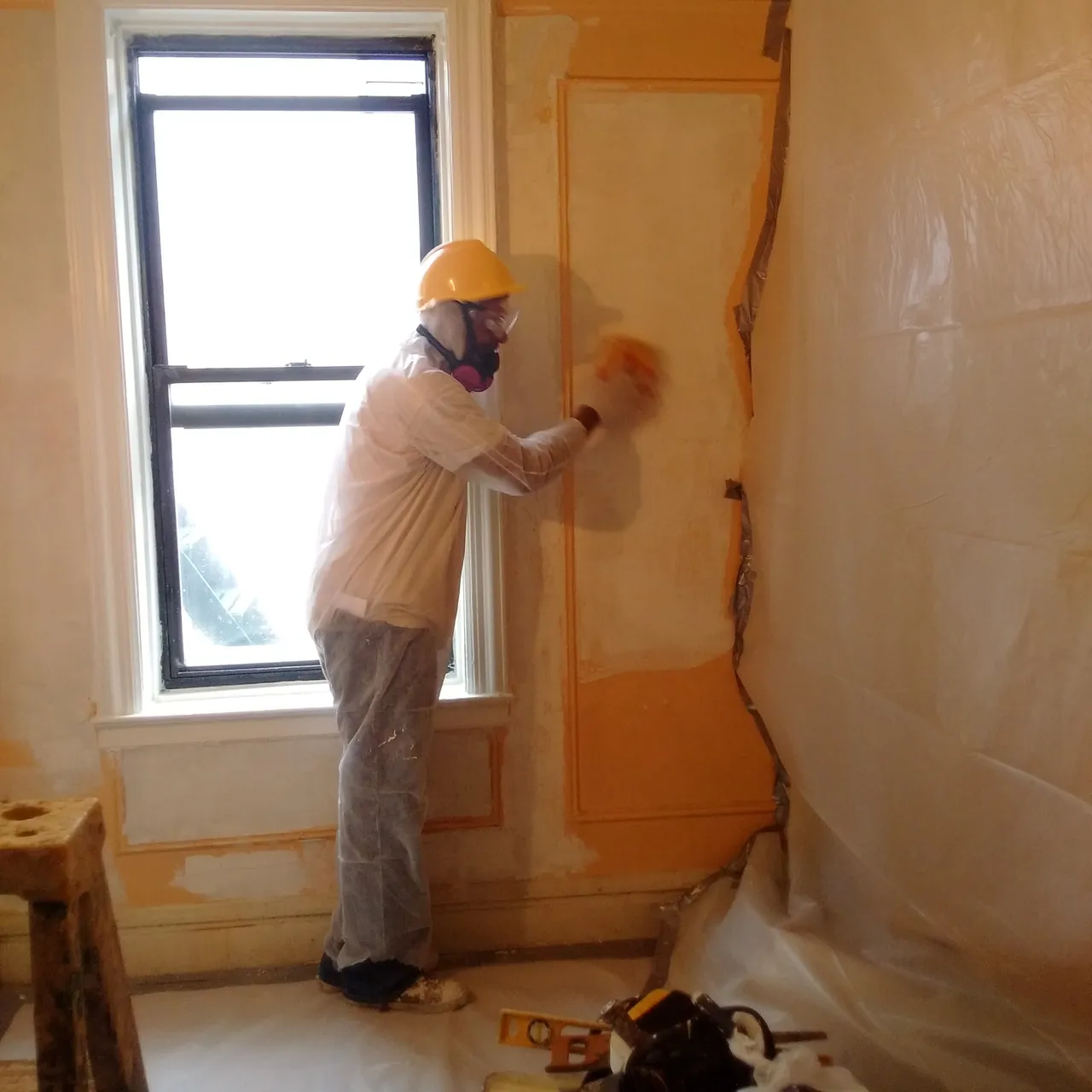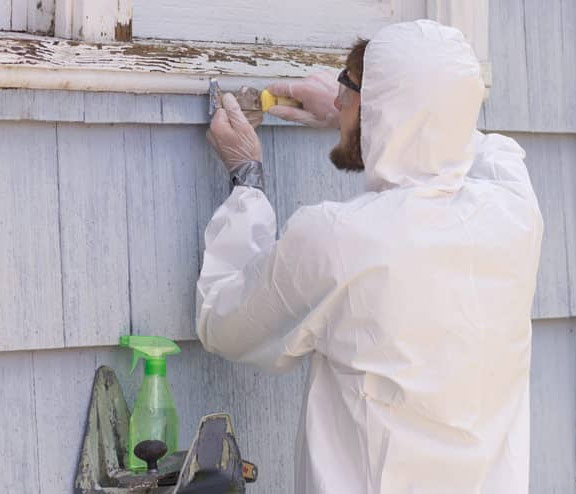Necessary Devices and Methods for Effective Lead Infraction Cleanup
Dealing with lead violations effectively demands a thorough strategy that mixes the right tools with strategic methodologies. The very first step includes gearing up employees with Individual Protective Equipment (PPE) to guard their wellness. Concurrently, making use of specialized cleaning tools, such as HEPA vacuums and lead-specific cleaner, is crucial for complete pollutant elimination. Efficient containment approaches, consisting of plastic sheeting and adverse air pressure systems, are necessary to protect against the spread of harmful materials. Safe disposal methods and strict adherence to regulative guidelines make sure responsible handling of hazardous waste. What are the nuanced techniques that absolutely make a difference?
Individual Safety Equipment
Personal protective devices (PPE) is a crucial element in the efficient monitoring of lead contamination cleaning. PPE works as an important barrier, protecting workers from the harmful impacts of lead direct exposure, which can cause extreme wellness repercussions. The important PPE for lead clean-up includes respirators, protective clothes, gloves, and eye security. Each kind of devices is particularly developed to reduce different risks associated with lead particles and dust.
Respirators, especially those furnished with HEPA filters, are vital for filtering airborne lead fragments, protecting against breathing. Appropriate fit and seal checks are essential to ensure their performance. Safety clothes, including coveralls and non reusable fits, avoids lead dirt from sticking to workers' garments, reducing the threat of additional contamination. Gloves, commonly made from nitrile or latex, shield the skin from straight contact with lead, while safety goggles or full-face guards safeguard the eyes from dirt and particles.
Moreover, strenuous training on the correct use and maintenance of PPE is necessary. Workers need to be educated on putting on and doffing treatments to avoid contamination. Routine inspections and substitutes of PPE components are required to preserve their safety abilities, making certain a secure and certified cleaning operation.
Specialized Cleaning Tools

Another essential device is the wet/dry vacuum cleaner, which can effectively clean up both dirt and liquid pollutants. These vacuums frequently come with HEPA filters to provide an additional layer of safety and security. Damp cleans or tack towels are additionally critical for surface area cleansing; they are especially developed to record and hold lead particles, lowering the danger of spreading out contamination.
For even more stubborn deposits, specialized lead-removal cleaner are needed. These representatives are formulated to break down lead bits, making them simpler to get rid of. Scrub brushes with tough bristles can aid in this procedure, especially on rough surfaces where lead dust often tends to stick a lot more strongly.
Additionally, encapsulants are utilized to secure lead-contaminated surface areas, avoiding the launch of lead dirt. These specialized paints and finishings are designed to stick to numerous substratums, giving a long-lasting option for lead containment.
Effective Control Techniques
Reliable containment approaches are important in mitigating the spread of lead contamination during cleaning activities. Implementing durable control approaches guarantees that lead bits do not move to unaffected locations, thus safeguarding both workers and the setting (DOH & HPD Lead Violation Removal NYC).

To enhance control, encapsulants can be applied to surface areas that are not being removed or disturbed. These specialized coatings bind lead dust, minimizing its accessibility for resuspension. Additionally, all employees should put on proper Personal Protective Devices (PPE), including respirators and non reusable matches, to avoid contamination spread.
Safe Disposal Practices
Making certain secure disposal practices is a crucial part in the administration of lead contamination cleanup. Appropriate disposal reduces the risk of lead returning to the environment and threatening public health and wellness (DOH & HPD Lead Violation Removal NYC).
Transferring lead waste needs adherence to stringent guidelines. Making use of qualified contaminated materials carriers makes sure that the materials are dealt with properly. Documents, consisting of shows up describing the type and quantity of waste, should accompany shipments to track the waste from the website of origin to its final disposal location.
Designated contaminated materials disposal facilities are furnished to handle lead-contaminated products safely. These centers commonly use innovative approaches such as stabilization, solidification, or chemical treatment to reduce the effects of the lead before disposal. Landfilling in specialized, lined areas that protect against leachate from contaminating groundwater is an usual practice for final disposal.
Routine training for workers involved in lead waste disposal is important to preserve safety criteria and prevent unintentional exposure. By sticking to these techniques, organizations can significantly lower the ecological and wellness effects linked with lead contamination.
Regulatory Conformity Tips

Following regulatory conformity is vital in the successful execution of lead contamination cleanup. Understanding and complying with federal, state, and neighborhood guidelines makes certain not only the safety and security and wellness of people yet likewise the lawful and economic health of the cleanup organization. The Epa (EPA) establishes rigid criteria, such as the Lead Restoration, Fixing, and Paint (RRP) Rule, which mandates appropriate qualification and training for professionals taking care of lead-based tasks.
Compliance begins with a comprehensive assessment of appropriate regulations and policies. Organizations should remain upgraded on any kind of legislative changes, which can be helped find with with routine training sessions and subscribing to sector updates. Paperwork is an additional critical compliance aspect; keeping thorough records of all activities, including assessment reports, employee training logs, and disposal manifests, is vital.
In addition, involving with certified lead assessors or risk assessors makes sure that lead hazards are properly recognized and alleviated. Companies have to impose making use of Individual Safety Equipment (PPE) and make sure that safety procedures are purely complied with. Last but not least, clear communication with stakeholders, including workers, clients, and regulatory bodies, will certainly foster a society of conformity and responsibility, ultimately adding to a much look at this website safer and much more reliable lead cleanup procedure.
Final Thought
Reliable lead violation clean-up requires the assimilation of specialized tools and calculated methodologies to guarantee safety and security and efficiency. Personal protective devices (PPE) safeguards employees from direct exposure, while safe disposal methods and rigorous adherence to governing compliance are vital for sensibly taking care of hazardous waste.